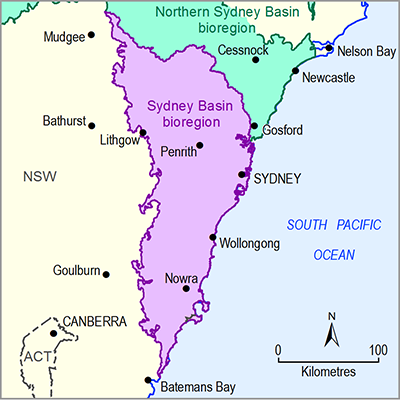Two of the objectives of NSW’s Water Sharing Plan for the Greater Metropolitan Unregulated River Water Sources 2011 pertain to environmental objectives: Objective (C) is to ‘protect, preserve, maintain and enhance the important river flow dependent and high priority groundwater-dependent ecosystems of these water sources’ and Objective (O) is to ‘implement Government decisions on environmental flow regimes for the Upper Nepean and Upstream Warragamba Water Source, the Hawkesbury and Lower Nepean Rivers Water Source, the Southern Sydney Rivers Water Source and the Shoalhaven River Water Source’. Their purpose is to maintain the overall health of rivers in the region and to protect wetlands, lakes, estuaries and floodplains that rely on river flow to sustain them (NSW Office of Water, 2011).
Environmental flows are allocated based on the premise that ecosystem health will be maintained by setting annual extraction limits and ‘cease-to-pump’ levels which prevent pumping when river levels are low. Daily releases of environmental flows from a number of water storages that feed into the Shoalhaven, Upper Nepean, Upstream Warragamba, Hawkesbury and Lower Nepean rivers are also specified in the water sharing plan, for example:
- Fitzroy Falls Reservoir and Tallowa Dam into Shoalhaven River
- Wingecarribee and Thompsons Creek reservoirs; Pheasants Nest and Broughtons Pass weirs; Lake Lyall; Lake Wallace; Cordeaux, Cataract, Nepean and Avon dams into the Upper Nepean and Upstream Warragamba water source
- Menangle, Camden, Sharpes, Cobbity, Mount Hunter Rivulet, Brownlow Hill, Theresa Park, Wallacia weirs that flow into the Hawkesbury and Lower Nepean rivers.
The environmental flow protection rules developed for the water sharing plan consider the occurrence of threatened frogs, macro-invertebrates, birds, fish, aquatic and riparian vegetation species, as well as endangered ecological communities and threatened populations. However, there has been minimal research or monitoring to ensure that the water sharing plan achieves its environmental objectives. An existing program is underway to better understand whether current environmental flow provisions sustain the target ecosystems in unregulated rivers (Brooks et al., 2010).

